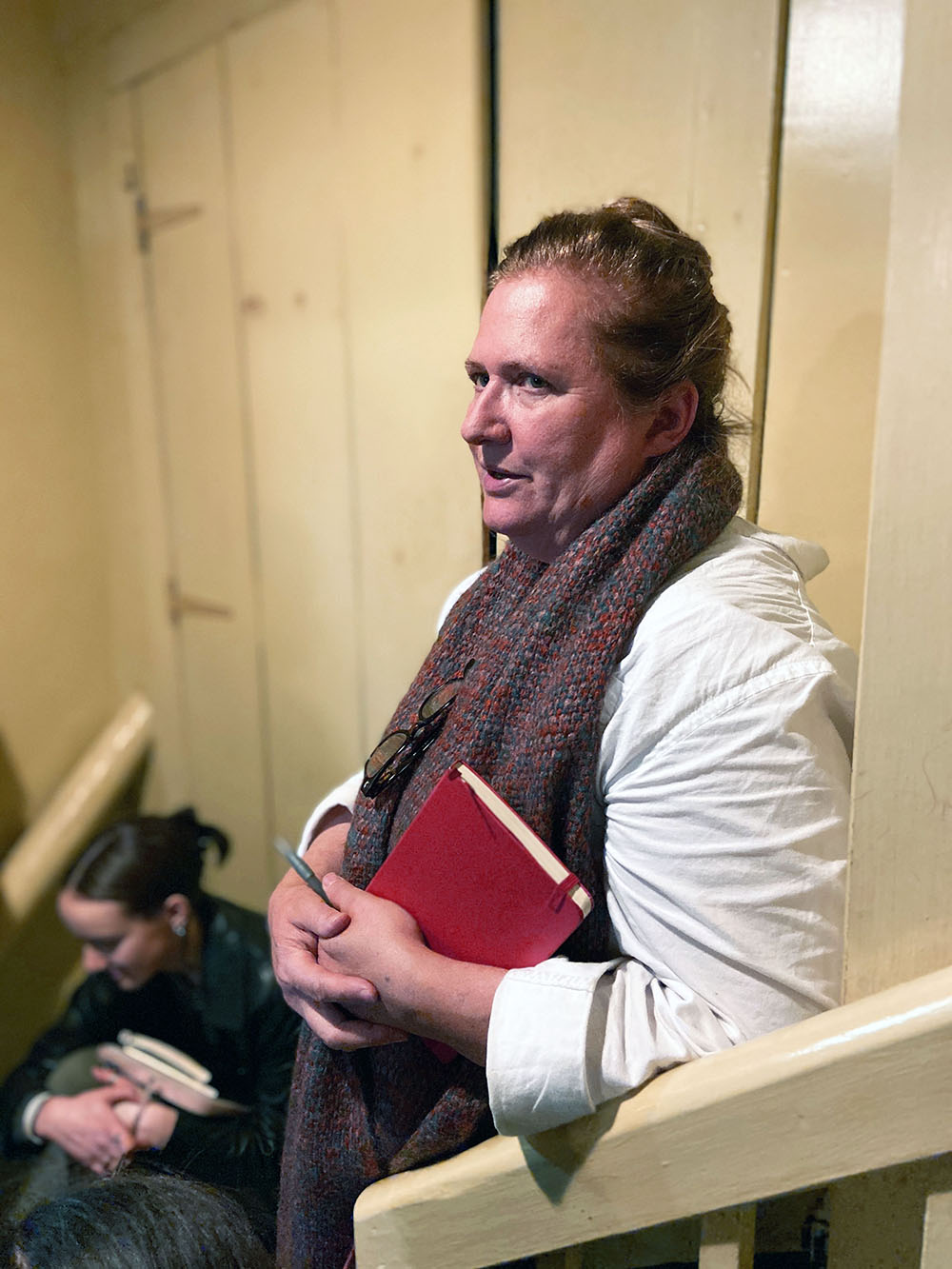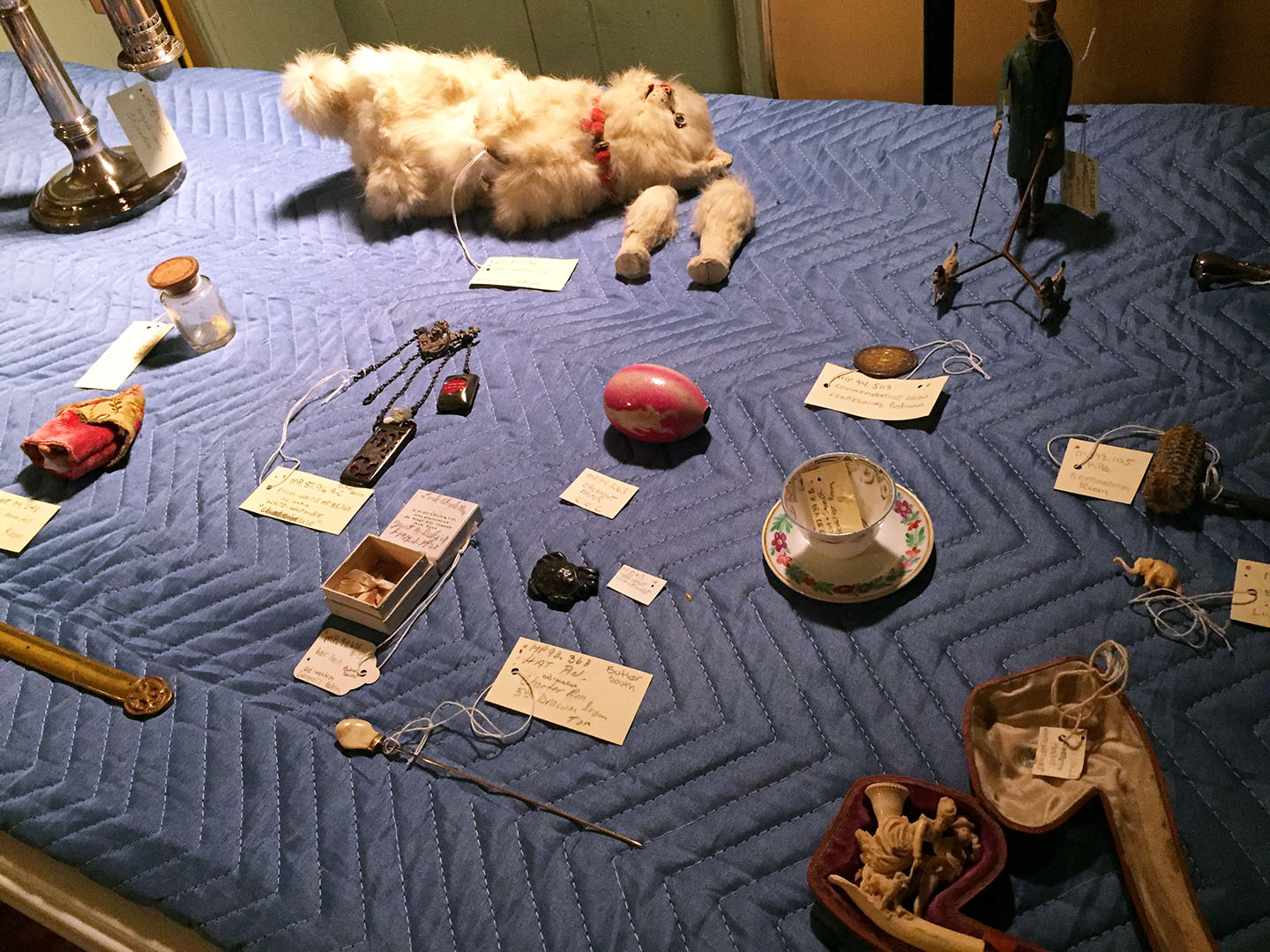Course Spotlight: The Curiosity Cabinet
Students in Professor Susan Merriam's Curiosity Cabinet course listen to one of their peers present research on objects in the Montgomery Place collection.
You never know what you'll find in the Montgomery Place collection. The Curiosity Cabinet class, taught by Associate Professor of Art History Susan Merriam, meets regularly in the basement of the mansion at the Montgomery Place Campus to study some of the fascinating objects in the collection. Items include a mechanical cat, dueling pistols, and a chicken foot letter opener. The collection boasts well over 8,000 objects.
Students have been researching objects that illuminate the historical phenomenon of the curiosity cabinet. These collections of oddities, as small as a box or as large as a room, are precursors to the modern museum. In class on Tuesday, November 5, students gave presentations on their research, discussing such themes as shifting colonial structures in the era of the objects, the romanticism of nature and early American identity, and Victorian death culture.
During the 16th and 17th centuries, fabulous shells, valuable oil paintings, and exquisitely carved ivory pieces shared display space with oddly shaped vegetables, primitively taxidermied animals, and an array of other oddities in curiosity cabinets. Until relatively recently, scholars believed that the cabinets were merely eccentric exercises in the appreciation of peculiar or marvelous things. Recent research, however, has shown that the collections constitute a premodern system of classifying objects and an important step in the emergence of our modern taxonomic systems.
This course analyzes the emergence of the cabinets, the collecting practices that sustained them, the relationship between colonization and the cabinets, the curiosity aesthetic, and the role the cabinets played in the history of science. The main project for the course is to conceptualize and research a curiosity cabinet exhibition featuring objects from Montgomery Place. At least half of the classes during the semester meet at Montgomery Place, where students become familiar with the collections, learn about collections management, and do original research.
The exhibition of Montgomery Place objects and student research will take place at Stevenson Library over the winter, with an opening reception on December 10 from 3:00 to 5:00 p.m.

Post Date: 11-05-2019
Students have been researching objects that illuminate the historical phenomenon of the curiosity cabinet. These collections of oddities, as small as a box or as large as a room, are precursors to the modern museum. In class on Tuesday, November 5, students gave presentations on their research, discussing such themes as shifting colonial structures in the era of the objects, the romanticism of nature and early American identity, and Victorian death culture.

Susan Merriam, associate professor of art history at Bard College.
During the 16th and 17th centuries, fabulous shells, valuable oil paintings, and exquisitely carved ivory pieces shared display space with oddly shaped vegetables, primitively taxidermied animals, and an array of other oddities in curiosity cabinets. Until relatively recently, scholars believed that the cabinets were merely eccentric exercises in the appreciation of peculiar or marvelous things. Recent research, however, has shown that the collections constitute a premodern system of classifying objects and an important step in the emergence of our modern taxonomic systems.
This course analyzes the emergence of the cabinets, the collecting practices that sustained them, the relationship between colonization and the cabinets, the curiosity aesthetic, and the role the cabinets played in the history of science. The main project for the course is to conceptualize and research a curiosity cabinet exhibition featuring objects from Montgomery Place. At least half of the classes during the semester meet at Montgomery Place, where students become familiar with the collections, learn about collections management, and do original research.
The exhibition of Montgomery Place objects and student research will take place at Stevenson Library over the winter, with an opening reception on December 10 from 3:00 to 5:00 p.m.

Items from the Montgomery Place collection for use in the Curiosity Cabinet course.
Post Date: 11-05-2019